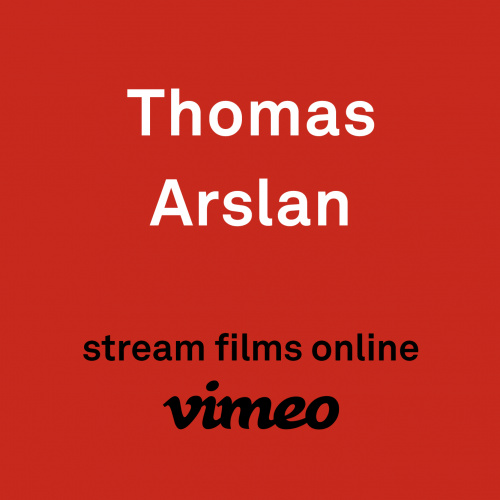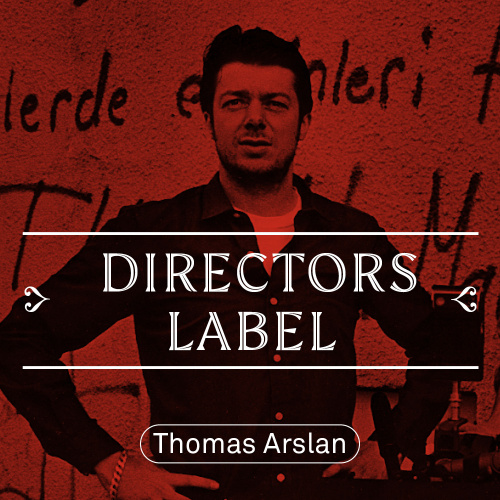
From Far Away
GER 2006, 89 min
A personal travelogue, a documentary about a trip through Turkey.
Synopsis
FROM FAR AWAY is a documentary about a trip through Turkey that Thomas Arslan took in May and June 2005. The route was from Istanbul and Ankara to Gaziantep in the southwest of the country and from there further east through Diyarbakir and Van to Dogubayazit, near the Iranian border. What the film shows has nothing to do with the usual motifs from today’s Turkey: impressions of daily life in the western cities, like Istanbul and Ankara, but also regions in the country’s east that were fought over until recently. FROM FAR AWAY is not journalistic reportage, but presents the filmmaker’s personal view of this country.
Streaming-Info
Rent or buy the movie on our Vimeo channel.
Language: German, Turkish, Subtitles: German, English (optional)
Film kaufen
VOD
451-Vimeo
Press reviews
A true documentary film is a somewhat tautological affair: what you see is what you see, the way it is shown. Therein lies in the best of cases not a deficiency but a documentary's richness. It is and becomes and remains a matter, quite simply, of being there, with all the complexities this expression offers. And as this is, after all, a matter of showing not telling, it can and should go without much saying.
Thomas Arslan's documentary FROM FAR AWAY is a marvelous one, as it gives something to see by offering directions to the viewer's gaze without ever giving prescriptions. What the camera registers, FROM FAR AWAY, from afar and also so close, is given to us in order to be seen.
Thomas Arslan belongs to a bunch of German directors - Angela Schanelec and Christian Petzold among them -, who have been grouped by critics under the label "Berlin school". What they have in common is an unusual level of aesthetic reflexion. It makes itself felt - as an absence of cliché and stupidity - in every single frame of this film that begins in Istanbul and moves to Turkey's most eastern parts. (Ekkehard Knörer, signandsight.com, 2006)
Awards and Festivals
- Berlinale - Forum 2006
- 11. Filmfestival Türkei/Deutschland, Nürnberg 2006
- Buenos Aires International Film Festival of Independent Cinema 2006
- Crossing Europe, Linz 2006
- Internationales Dokumentarfilmfestival München 2006
- International Film Festival - Era New Horizons, Wroclaw/Polen 2006
- Vancouver International Film Festival 2006
- Duisburger Filmwoche 2006
- IndieLisboa, Independent Film Festival Lissabon 2007
- Pesaro International Film Festival 2008
- Goethe-Institute: Buenos Aires, Ankara, Lissabon, London
Additional Texts
Interview with the director
Question: The few commentary texts, which you speak yourself, give FROM FAR AWAY a personal character. At the same time, the film displays a great distance from what it observes. What stance did you have when you took this trip?
Thomas Arslan: The images I had of Turkey were childhood impressions, and thus not very reliable. I wanted to see what the present looks like in Turkey. Despite all my personal connection, it was clear to me that this would be a glimpse from the outside, from a certain distance: the view of someone who journeyed here.
Question: Your father’s birth house in Ankara and the house where the family later lived are the only places you seek out that have a truly personal meaning for you. And your father’s sister is the only person who speaks directly into the camera. What does following these personal tracks mean to you?
T.A.: The biographical connection was more a starting point for this trip, not the goal or focus. It justified beginning the journey in the first place. Of course, Ankara is a special city for me, because I spent several years of my childhood there and part of my family still lives there. My access to this city was different from that to the other places on this trip; and yet Ankara was always planned as just one station among several.
Question: The journey begins in the rather Western cities of Istanbul and Ankara. We see Atatürk’s mausoleum, the dams on the Euphrates, and the Kurdish regions, where fighting went on until recently. Why did you choose this travel route?
T.A.: This route is a movement from the seemingly familiar to the unknown. In the West, we most likely have an idea of Istanbul – which is no longer true even about Ankara. And people here know hardly anything about Turkey’s southeast and east. I assumed that the places where there would most likely be something to see were those somewhat removed from general attention. Ultimately, this is also true of Istanbul, a gigantic city of which I could have shown many things. What I chose does not correspond with the usual images one has of Istanbul – for example, the worn-out bridge metaphors. On the one hand, I wanted to avoid such images, but I also wanted to make something of the city visible. I wanted to convey a spectrum of Turkey without taking an overly journalistic or sociological approach. I concentrated on the city because I don’t feel at home in the countryside. I feel that way in Germany as well as in Turkey, by the way. It’s easier for me to set things in relation to cities.
Question: Toward the end we see the significant mountain Ararat, the landmark of the Armenians. The genocide of the Armenians in the early 20th century is mentioned as soberly as every other observation made in the film. As we know, little is done in Turkey to deal with this aspect of history.
T.A.: I didn’t travel in Turkey as a filmmaking EU Commissioner. I mean, I had no interest in making the European gesture of accusation. I thought it was normal to talk about this theme and not to remain silent.
Question: In the course of shooting, did you think about asking the people who live there about this topic?
T.A.: I rejected the idea in advance. I wanted to make a film that did without interviews that try to prove something.
Question: What was the production situation while you were shooting?
T.A.: There were four people on the crew. We had no lighting and only three lenses. I usually used only the 25mm one. With a 16mm format, it comes closest to the human field of vision. We spent about a week at each important location of the trip. I knew I shouldn’t shoot too much, because I had relatively little film with me. That was the situation I had to deal with and make do with.
Question: FROM FAR AWAY is your first full-length documentary. A special quality of the film is its aesthetics, which resemble your feature films in regard to tempo, the handling of light and perspective, the long shots, and the moods conveyed. It seems as if observation itself is the center of both genres. What kind of a concept did you have when you began shooting?
T.A.: For me, making films does not mean having ideas, but being precise. The difficult thing is to start from what you see and not from something prefabricated. When I was making the film, discourse about Turkey was very heated, and it still is. One of the most important challenges in this project was to avoid landing immediately in the patterns of speech and the images that are always associated with Turkey. Occident, Orient – I connect nothing real with these terms. With FROM FAR AWAY, I wanted the viewer to receive an image of this country that cannot be immediately subsumed in a theory, not a mere illustration of something already known. I wanted to open my gaze for simple, concrete things, for daily life in Turkey.
It was clear to me that, on the one hand, this film would emerge only gradually while shooting it, and that at the same time the first shots would already give it a direction. In the Istanbul segment that begins the journey, I feel my way in this direction. I wanted to arrive and take a look. But I wanted to intervene in what went on in front of the camera as little as possible. As far as possible, things should explain themselves.
Question: Is that why you decided to make a documentary film?
T.A.: For me, feature film and documentary film are not that far apart in terms of what they have to try to do. From where does one speak? How close is one to one’s subjects and the people, or how far away from them? Where is the camera? What image follows what image? Our view of Turkey is extremely blocked by debates, opinions, and prejudices. When abstractions and fictions burgeon, I think it’s important to turn to what is concrete again. What do the streets, the buildings, and people’s clothes look like in this country about which so many people have such definite opinions, although they have never seen it? In this case, the methods of the feature film seem too prestructured to me. I really didn’t know what awaited me. And my interest was not in putting my own view to the test. I wanted to make a film without the security of a story.
Interview: Gabriela Seidel, Berlin, January 2006
Watch Movie
VOD
451-Vimeo
Credits
Director and Screenplay
Thomas Arslan
Director of Photography
Thomas Arslan
Editor
Bettina Blickwede
Sound Editor
Andreas Mücke-Niesytka
Sound
Martin Ehlers
Sound Mixer
Martin Steyer
1st AD
Tuncay Kulaoglu
Production Manager
Heino Herrenbrück
Commissioning Editor
Inge Classen
Producer
Thomas Arslan
Produced by
Pickpocket Filmproduktion, ZDF / 3sat
World Premiere
13.02.2006, Berlinale - Forum








